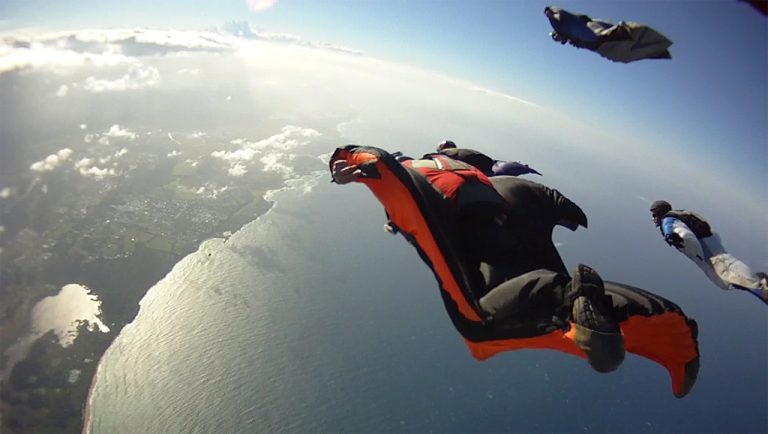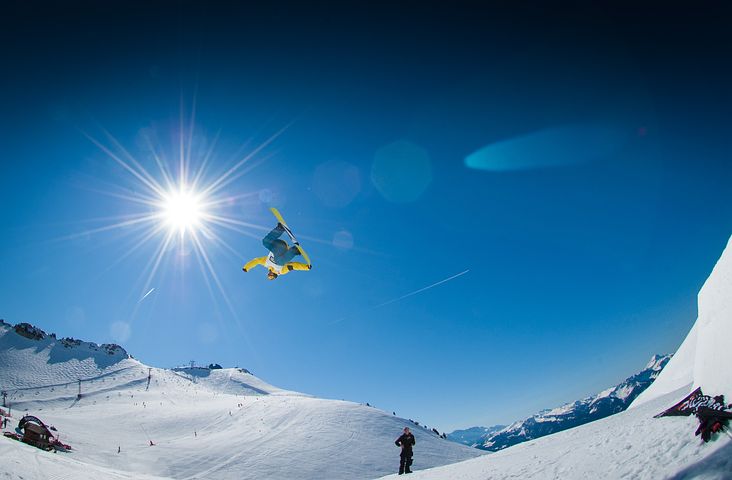General Rules of Parachuting
So, envision this: You're about to make your first solo jump. The adrenaline's pumping, the wind's rushing past you, and the ground seems to be getting closer by the second. But wait, have you checked your gear thoroughly? Have you gone through the pre-jump briefing? These are just a couple of the critical aspects of parachuting that can make all the difference between a safe landing and a potential disaster. But what about your exit technique and mastering freefall maneuvers? Stick around to uncover the essential rules that every parachutist should abide by to make sure a successful jump.
Gear Inspection
Before every jump, it's important that you thoroughly inspect your gear to guarantee its safety and functionality. Gear maintenance is essential in ensuring a successful and safe jump. Start by checking the parachute canopy for any rips, tears, or holes. Make sure all the lines are intact and free from knots or tangles. The harness and straps should also be examined for any signs of wear or damage.
Next, move on to the container system. Check the main and reserve containers to ensure they are securely closed and that all the flaps and buckles are in place. Inspect the automatic activation devices to make sure they are properly functioning. It's crucial to conduct these safety checks diligently to prevent any potential malfunctions during your jump.
Additionally, inspect your altimeter to verify that it is accurately calibrated. This instrument is essential for monitoring your altitude during the jump. Ensure that your helmet is in good condition and fits securely. A proper fitting helmet is essential for your safety in case of any unforeseen circumstances.
Pre-Jump Briefing
During the pre-jump briefing, make sure you attentively listen to the instructions provided for a safe and successful jump. This briefing is vital for your safety and the success of the jump. Pay close attention to the emergency procedures outlined by your instructor. Understanding these procedures could make all the difference in the rare event that something goes wrong during your jump. Additionally, familiarize yourself with the safety precautions to be taken before, during, and after the jump. Your well-being is paramount, so take these precautions seriously.
Parachute deployment is a critical aspect covered in the pre-jump briefing. Listen carefully to the instructions on how to deploy your parachute. Knowing the correct procedures for deploying your parachute can mean life or death in extreme cases.
Communication signals will also be discussed during the briefing. Understanding these signals is essential for effective communication with your instructor and fellow jumpers. Clear communication ensures that everyone is on the same page and can respond swiftly in case of emergencies.
Exit Technique
In preparation for your jump, mastering the exit technique is fundamental for a smooth and successful parachute deployment. Proper body positioning plays an important role in executing a flawless exit. As you approach the aircraft door, make sure your body is stable, feet shoulder-width apart, and knees slightly bent. Lean slightly forward to maintain balance and be ready for the rush of wind upon exit.
Before you jump, evaluate the wind direction. Understanding the wind's force and direction is essential for a controlled exit. Align yourself with the wind flow to prevent unnecessary spinning or tumbling during the initial stages of the jump. This evaluation will aid in a stable and controlled exit from the aircraft.
As the moment arrives, remember to keep your head up and eyes forward. Trust in the training you've received and focus on a steady exit. Push yourself away from the aircraft with confidence, maintaining the correct body posture. The goal is to achieve a clean separation from the plane to avoid any entanglements.
Freefall Maneuvers
Exploring the exhilarating domain of freefall requires precise control and skill to execute maneuvers with grace and precision. As you soar through the sky, mastering advanced techniques and adhering to safety precautions is important for a successful and thrilling experience. Here are some key points to keep in mind:
- Maintain Proper Body Position: To maneuver effectively during freefall, ensuring your body is stable and aligned is essential. Keep your chin up, arms and legs in the correct position, and maintain a slight arch in your back to control your movements smoothly.
- Practice Controlled Turns: Engaging in controlled turns allows you to change direction while maintaining stability. By using your arms and legs as rudders, you can smoothly navigate the sky without losing control.
- Execute Barrel Rolls Safely: Barrel rolls are an exciting maneuver, but they require skill and caution. Always practice this maneuver at higher altitudes to allow for ample recovery time and maintain awareness of other skydivers in the vicinity.
- Monitor Altitude Closely: While performing freefall maneuvers, it's important to keep a close eye on your altitude. Knowing when to execute each maneuver and when to prepare for the parachute deployment ensures a safe and controlled descent.
Mastering these advanced techniques and following safety precautions will enhance your freefall experience, providing you with the freedom and excitement you seek in the skies.
Landing Procedure
When preparing for landing after your exhilarating freefall, executing a safe and controlled procedure is paramount for a successful conclusion to your skydiving adventure. As you near the ground, mastering the flare technique is essential. The flare is the action of pulling down on both steering toggles simultaneously to slow your descent and provide a softer touchdown. Practice this maneuver during your training jumps to guarantee proficiency on every landing.
In addition to the flare technique, it's critical to contemplate safety tips for a smooth landing. Always be aware of your surroundings and other skydivers in the landing area. Maintain a proper landing pattern and avoid crowded areas to prevent mid-air collisions. Pay attention to wind direction before descending to adjust your approach accordingly and land into the wind for a more controlled touchdown.
While most landings are routine, it's important to be prepared for any unexpected scenarios. Familiarize yourself with emergency procedures such as alternative landing zones and how to handle equipment malfunctions. Stay calm and focused if you encounter a challenging situation during your descent.
Frequently Asked Questions
What Are Some Common Misconceptions About Parachuting That Beginners Should Be Aware Of?
Imagine skydiving, exhilarating but misunderstood. Let's clear the air: "Freefalling equals danger" is a myth. Learn safety measures, trust your gear. Embrace the thrill with awareness, dispelling misconceptions for a liberated experience.
How Does Weather Conditions Affect the Decision to Jump?
When deciding to jump, take weather conditions seriously. Check wind speed, cloud cover. Prioritize safety precautions. Be cautious and patient. Your life is valuable. Don't rush. Stay informed and aware.
Can You Provide Some Tips for Staying Calm and Focused During a Jump?
To stay calm and focused during a jump, remember to use breathing techniques and visualization methods. Try meditation and positive affirmations. By incorporating these practices, you can ease your mind and enhance your performance.
Are There Any Specific Physical or Mental Requirements for Someone to Try Parachuting?
To try parachuting, you need decent physical fitness and mental preparation. Make sure you can handle the physical demands and stay calm under pressure. It's liberating, but being ready is key for a successful jump.
What Are Some Potential Risks or Dangers Associated With Parachuting That Beginners Should Be Aware Of?
As you plummet through the sky, remember that parachuting can be a thrilling ride. Safety precautions are essential; familiarize yourself with emergency procedures. Understand risk management and the importance of meticulous equipment maintenance for a safe jump.






